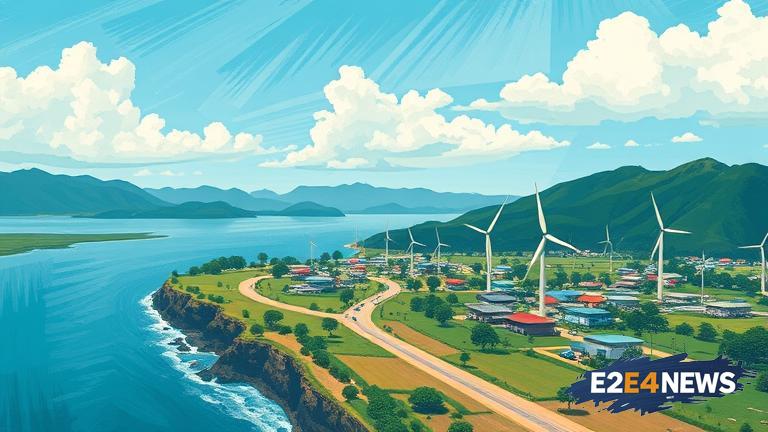The Philippines, an archipelago prone to natural disasters and climate change, is undergoing a significant transformation in its energy sector. The country has set its sights on a clean energy transition, aiming to reduce its reliance on fossil fuels and decrease greenhouse gas emissions. This ambitious endeavor is driven by the need to mitigate the impacts of climate change, ensure energy security, and promote sustainable development. The Philippines’ energy demand is expected to increase by 10% annually, driven by rapid economic growth and industrialization. To meet this growing demand, the government has implemented policies and programs to promote the development and utilization of renewable energy sources. The country’s renewable energy sector is expected to play a crucial role in the clean energy transition, with solar and wind power being the primary sources of renewable energy. The Philippines has set a target of increasing its renewable energy capacity to 35% of the total energy mix by 2030. To achieve this goal, the government has introduced incentives such as tax breaks, feed-in tariffs, and net metering policies to encourage investment in renewable energy projects. The private sector is also playing a vital role in the clean energy transition, with companies investing heavily in renewable energy infrastructure. The Philippines’ clean energy transition is not without its challenges, however. The country’s energy infrastructure is still largely reliant on fossil fuels, and the integration of renewable energy sources into the grid poses significant technical and logistical challenges. Moreover, the high upfront costs of renewable energy technologies and the lack of energy storage facilities are major barriers to the widespread adoption of clean energy. Despite these challenges, the Philippines remains committed to its clean energy goals, with the government and private sector working together to overcome the obstacles and ensure a successful transition. The clean energy transition is expected to have numerous benefits for the Philippines, including reduced greenhouse gas emissions, improved air quality, and enhanced energy security. The transition is also expected to create new job opportunities and stimulate local economies. The Philippines’ experience in transitioning to clean energy can serve as a model for other developing countries, demonstrating the feasibility and benefits of shifting away from fossil fuels. The country’s clean energy transition is a testament to its commitment to sustainable development and its determination to mitigate the impacts of climate change. As the Philippines continues on its path towards a clean energy future, it is likely to face numerous challenges and opportunities. The government and private sector must work together to address the technical, financial, and policy barriers to the adoption of renewable energy sources. With the right policies and investments in place, the Philippines can ensure a successful clean energy transition and achieve its goal of reducing greenhouse gas emissions and promoting sustainable development. The Philippines’ clean energy transition is a critical step towards a more sustainable and environmentally-friendly future, and its success can have far-reaching implications for the country and the world. The transition is expected to contribute to the global efforts to mitigate climate change, and the Philippines’ experience can serve as a valuable lesson for other countries seeking to transition to clean energy. In conclusion, the Philippines’ clean energy transition is a complex and challenging process, but it is a necessary step towards a more sustainable and environmentally-friendly future. With the right policies, investments, and international cooperation, the Philippines can overcome the obstacles and achieve its clean energy goals, contributing to a better future for the country and the world.





